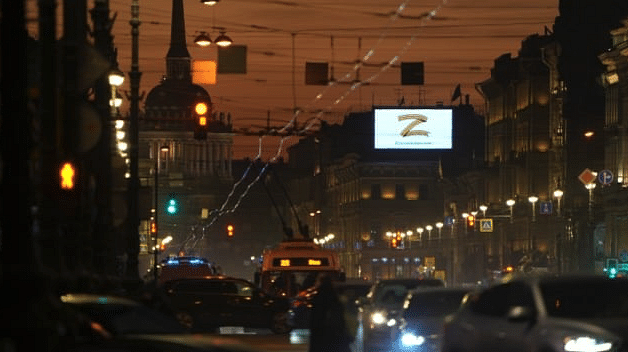
From Z To Q: When Letters Become Political Symbols
London, Mar 22 (The Conversation) Painted on the side of tanks and emblazoned on the shirt of Russian gymnast Ivan Kuliak, the letter Z has come to represent support for Russia’s invasion of Ukraine. It has even been incorporated into the spelling of place names such as КуZбасс in south central Russia.
In some countries, the Czech Republic for instance, there are even discussions about whether displaying the letter should be a criminal offence. Its rise comes shortly after another lesser-used letter from the Latin alphabet – Q – became a part of far-right politics in the US (and abroad) through the conspiracy theory QAnon.
The use of symbols is a fundamental part of any political conflict -– part of the propaganda strategy that tries to shape the public narrative. But what is most interesting is how these effective symbols emerge, and that some of them resonate so powerfully that they end up banned as a form of hate speech.
The war for public opinion that runs alongside the actual war in Ukraine has given rise to a host of symbols representing support for one side or the other.
Twitter is full of people adding the Ukrainian flag emoji to their name. The defiant words of the Ukrainian defenders of Snake Island – “Russian warship, go fuck yourself!” – have become a powerful underdog slogan, and even the basis for an official Ukrainian postage stamp.
On the other side, the most notable symbol has been the simple Z. There have been many theories about why this letter has become a pro-war symbol, and what its origins might be.
Is it because it represents the Russian word for west (zapad), the direction in which Putin’s tanks are rolling? Or is it shorthand for Za pobedu –- “for victory”? There is also the oddity that the Cyrillic alphabet doesn’t have a sign resembling Z. The zed sound is written as З.
Giving letters meaning
The circumstances of a symbol’s origin are only a small part of its story. It’s the way symbols come to resonate in society, and how people impose meanings on them, which transforms arbitrary signs into powerful instruments of propaganda.
Political symbols can take pretty much any form you can imagine. In 2013, penguins became the symbol of anti-government protesters in Istanbul. When violent clashes between police and protesters first broke out, all the national TV channels chose not to cover them.
CNN Turk instead ran a documentary about penguins –- which protesters then adopted as an emblem for their struggle, and to mock the broadcaster.
The use of letters of the alphabet as political symbols is a little unusual for the simple reason that individual letters aren’t meant to have any intrinsic meaning of their own. They’re supposed merely to represent sounds which, when combined, produce words which only then have a meaning.
When the Nato phonetic alphabet (Alfa, Bravo, Charlie and so on) was being developed, one of the criteria for words used to represent letters was that they should “be free from any association with objectionable meanings”. They should be politically and culturally neutral, in the same way the letters themselves are.
The neutrality of alphabetic letters was also behind the World Health Organisation’s decision to use Greek letters to designate new COVID variants. Prior to this, the variants had been named according to their place of origin, but this risked stigmatising locations or countries by having them forever associated with the virus.
Even then, certain letters had to be omitted in case they accidentally led to unwanted associations. The Greek letter Xi, for example, was skipped as it resembles the surname of the president of China, Xi Jinping.
What this shows is that language is always potentially political, precisely because it’s at the heart of how humans interact – and human interaction itself is always, at some level, political. Words and symbols have a denotative meaning – their literal “dictionary definition” – but they also carry traces of the history of their use, which colours the connotations they have for people.
It’s not surprising that the two recent instances of alphabetic letters as political symbols have adopted the two least used of all the letters.
Z has traditionally been seen as superfluous in English –- so much so that Shakespeare made it the basis of an insult in King Lear: “Thou whoreson zed! Thou unnecessary letter!” And Q has associations with words such as query and question. So neither was a completely blank canvas before their use was co-opted.
Ultimately, however, it’s the way that signs are actually used that transforms them into symbols. It’s a matter of who they’re used by, for what purpose. Once this usage begins to spread through society and is adopted by supporters, highlighted and debated by the media – and, in some cases, banned – its meaning quickly gets embedded in the culture.
Eventually, it becomes part of the everyday vocabulary we use to make sense of the world.
(This story has been published from a wire agency feed without modifications to the text. Only the headline has been changed.)